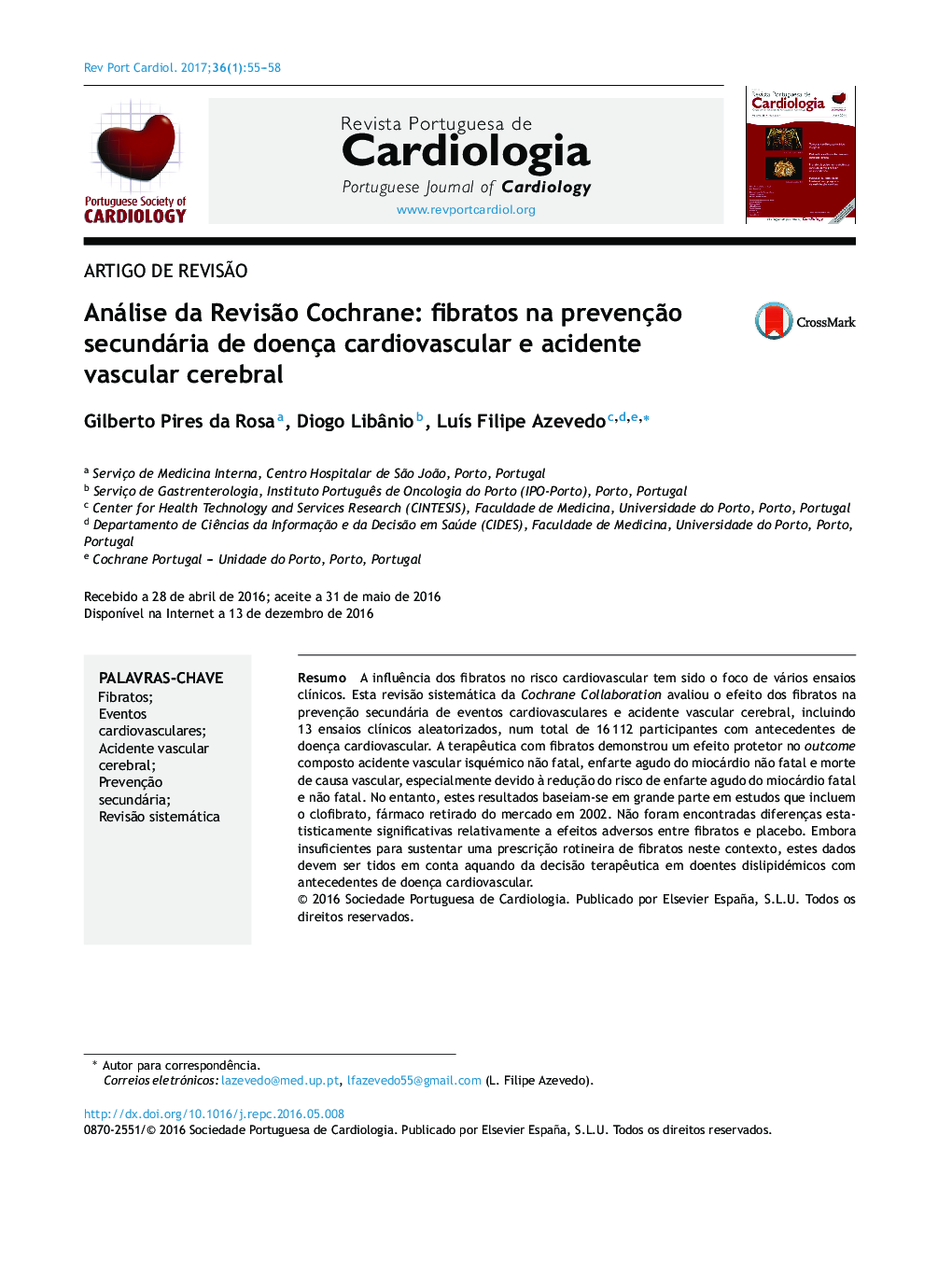| Article ID | Journal | Published Year | Pages | File Type |
|---|---|---|---|---|
| 5126463 | Revista Portuguesa de Cardiologia | 2017 | 4 Pages |
ResumoA influência dos fibratos no risco cardiovascular tem sido o foco de vários ensaios clÃnicos. Esta revisão sistemática da Cochrane Collaboration avaliou o efeito dos fibratos na prevenção secundária de eventos cardiovasculares e acidente vascular cerebral, incluindo 13 ensaios clÃnicos aleatorizados, num total de 16 112 participantes com antecedentes de doença cardiovascular. A terapêutica com fibratos demonstrou um efeito protetor no outcome composto acidente vascular isquémico não fatal, enfarte agudo do miocárdio não fatal e morte de causa vascular, especialmente devido à redução do risco de enfarte agudo do miocárdio fatal e não fatal. No entanto, estes resultados baseiamâse em grande parte em estudos que incluem o clofibrato, fármaco retirado do mercado em 2002. Não foram encontradas diferenças estatisticamente significativas relativamente a efeitos adversos entre fibratos e placebo. Embora insuficientes para sustentar uma prescrição rotineira de fibratos neste contexto, estes dados devem ser tidos em conta aquando da decisão terapêutica em doentes dislipidémicos com antecedentes de doença cardiovascular.
The influence of fibrates on cardiovascular risk has been the focus of several clinical trials. This Cochrane Collaboration Systematic Review evaluated the efficacy of fibrates for secondary prevention of cardiovascular events and stroke, analyzing 13 randomized controlled trials, in a total of 16 112 participants with a history of cardiovascular disease. Fibrates showed a protective effect for the composite outcome of nonâfatal stroke, nonâfatal myocardial infarction (MI) and vascular death, mainly due to reduction in the risk of nonâfatal or fatal MI. Nonetheless, these results largely relied on studies including clofibrate, a drug withdrawn from the market in 2002. No statistically significant differences regarding adverse events were found between fibrates and placebo. Although insufficient to support the routine prescription of fibrates in this setting, this evidence should be taken into account when deciding on lipidâmodifying therapy in dyslipidemic patients with a history of cardiovascular disease.
